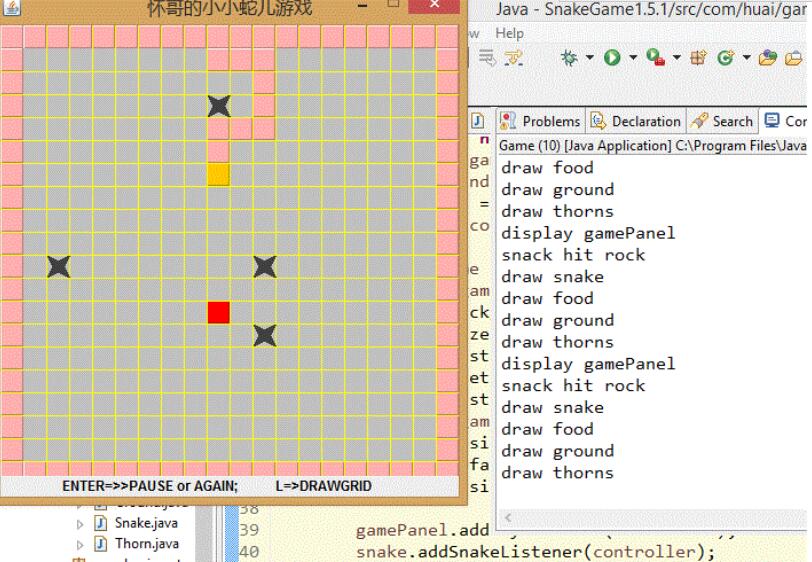实例如下:
?
|
1
2
3
4
5
6
7
8
9
10
11
12
13
14
15
16
17
18
19
20
21
22
23
24
25
26
27
28
29
30
31
32
33
34
35
36
37
38
39
40
41
42
43
44
45
46
47
48
49
50
51
52
53
54
55
56
57
58
59
60
61
62
63
64
65
66
67
68
69
70
71
72
73
74
75
76
77
78
79
80
81
82
83
84
85
86
87
88
89
90
91
92
93
94
95
96
97
98
99
100
101
102
103
104
105
106
107
108
109
110
111
112
113
114
115
116
117
118
119
120
121
122
123
124
125
126
127
128
129
130
131
132
133
134
135
136
137
138
139
140
141
142
143
144
145
146
|
import java.io.IOException;
import java.net.URL;
import java.util.ArrayList;
import java.util.List;
import java.util.Map;
import org.apache.http.NameValuePair;
import org.apache.http.HttpEntity;
import org.apache.http.client.config.RequestConfig;
import org.apache.http.client.entity.UrlEncodedFormEntity;
import org.apache.http.client.methods.CloseableHttpResponse;
import org.apache.http.client.methods.HttpGet;
import org.apache.http.client.methods.HttpPost;
import org.apache.http.conn.ssl.DefaultHostnameVerifier;
import org.apache.http.conn.util.PublicSuffixMatcher;
import org.apache.http.conn.util.PublicSuffixMatcherLoader;
import org.apache.http.impl.client.CloseableHttpClient;
import org.apache.http.impl.client.HttpClients;
import org.apache.http.message.BasicNameValuePair;
import org.apache.http.util.EntityUtils;
public class HttpUtils {
private static RequestConfig requestConfig = RequestConfig.custom().setSocketTimeout(15000).setConnectTimeout(15000)
.setConnectionRequestTimeout(15000).build();
public static String sendHttpGet(HttpGet httpGet) {
CloseableHttpClient httpClient = null;
CloseableHttpResponse response = null;
HttpEntity entity = null;
String responseContent = null;
try {
// 创建默认的httpClient实例.
httpClient = HttpClients.createDefault();
httpGet.setConfig(requestConfig);
// 执行请求
response = httpClient.execute(httpGet);
entity = response.getEntity();
responseContent = EntityUtils.toString(entity, "UTF-8");
} catch (Exception e) {
e.printStackTrace();
} finally {
try {
// 关闭连接,释放资源
if (response != null) {
response.close();
}
if (httpClient != null) {
httpClient.close();
}
} catch (IOException e) {
e.printStackTrace();
}
}
return responseContent;
}
/**
* 发送 post请求
* @param httpUrl 地址
* @param maps 参数
*/
public static String sendHttpPost(String httpUrl, Map<String, String> maps) {
HttpPost httpPost = new HttpPost(httpUrl);// 创建httpPost
// 创建参数队列
List<NameValuePair> nameValuePairs = new ArrayList<NameValuePair>();
for (String key : maps.keySet()) {
nameValuePairs.add(new BasicNameValuePair(key, maps.get(key)));
}
try {
httpPost.setEntity(new UrlEncodedFormEntity(nameValuePairs, "UTF-8"));
} catch (Exception e) {
e.printStackTrace();
}
return sendHttpPost(httpPost);
}
public static String sendHttpPost(HttpPost httpPost) {
CloseableHttpClient httpClient = null;
CloseableHttpResponse response = null;
HttpEntity entity = null;
String responseContent = null;
try {
// 创建默认的httpClient实例.
httpClient = HttpClients.createDefault();
httpPost.setConfig(requestConfig);
// 执行请求
response = httpClient.execute(httpPost);
entity = response.getEntity();
responseContent = EntityUtils.toString(entity, "UTF-8");
} catch (Exception e) {
e.printStackTrace();
} finally {
try {
// 关闭连接,释放资源
if (response != null) {
response.close();
}
if (httpClient != null) {
httpClient.close();
}
} catch (IOException e) {
e.printStackTrace();
}
}
return responseContent;
}
/**
* 发送Get请求Https
* @param httpPost
* @return
*/
public static String sendHttpsGet(HttpGet httpGet) {
CloseableHttpClient httpClient = null;
CloseableHttpResponse response = null;
HttpEntity entity = null;
String responseContent = null;
try {
// 创建默认的httpClient实例.
PublicSuffixMatcher publicSuffixMatcher = PublicSuffixMatcherLoader.load(new URL(httpGet.getURI().toString()));
DefaultHostnameVerifier hostnameVerifier = new DefaultHostnameVerifier(publicSuffixMatcher);
httpClient = HttpClients.custom().setSSLHostnameVerifier(hostnameVerifier).build();
httpGet.setConfig(requestConfig);
// 执行请求
response = httpClient.execute(httpGet);
entity = response.getEntity();
responseContent = EntityUtils.toString(entity, "UTF-8");
} catch (Exception e) {
e.printStackTrace();
} finally {
try {
// 关闭连接,释放资源
if (response != null) {
response.close();
}
if (httpClient != null) {
httpClient.close();
}
} catch (IOException e) {
e.printStackTrace();
}
}
return responseContent;
}
}
|
以上这篇HttpClient实现调用外部项目接口工具类的示例就是小编分享给大家的全部内容了,希望能给大家一个参考,也希望大家多多支持快网idc。
原文链接:http://www.cnblogs.com/xiaofengyuan/p/6339776.html
相关文章
猜你喜欢
- 个人服务器网站搭建:如何选择合适的服务器提供商? 2025-06-10
- ASP.NET自助建站系统中如何实现多语言支持? 2025-06-10
- 64M VPS建站:如何选择最适合的网站建设平台? 2025-06-10
- ASP.NET本地开发时常见的配置错误及解决方法? 2025-06-10
- ASP.NET自助建站系统的数据库备份与恢复操作指南 2025-06-10
TA的动态
- 2025-07-10 怎样使用阿里云的安全工具进行服务器漏洞扫描和修复?
- 2025-07-10 怎样使用命令行工具优化Linux云服务器的Ping性能?
- 2025-07-10 怎样使用Xshell连接华为云服务器,实现高效远程管理?
- 2025-07-10 怎样利用云服务器D盘搭建稳定、高效的网站托管环境?
- 2025-07-10 怎样使用阿里云的安全组功能来增强服务器防火墙的安全性?
快网idc优惠网
QQ交流群
您的支持,是我们最大的动力!
热门文章
-
网站服务器关闭解决方案与临时维护指南:数据迁移及应急处理优化
2025-05-25 91 -
2025-05-27 88
-
2025-05-29 80
-
2025-05-27 37
-
2025-05-29 22
热门评论













